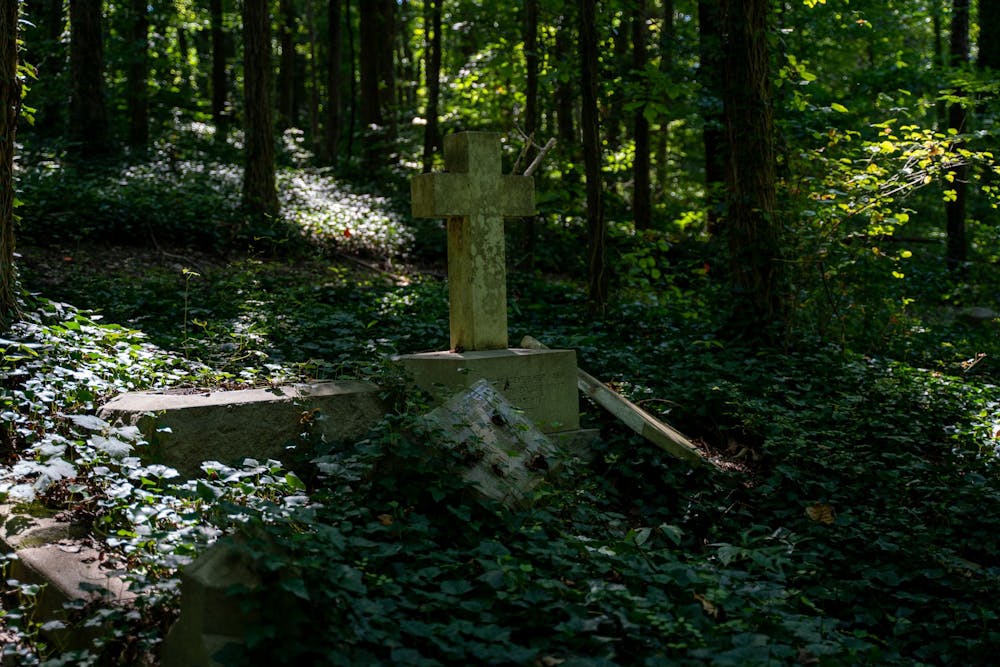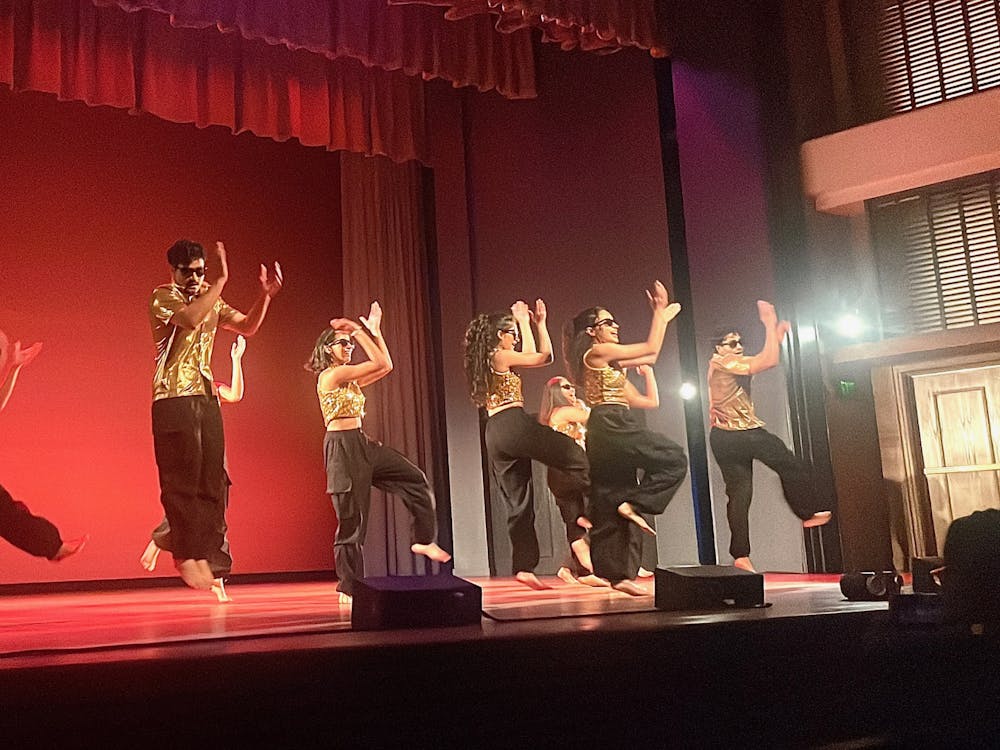The East End Cemetery Collaboratory will release a primary version of a digital repository of information about the people interred at East End Cemetery in August, said Collaboratory leaders from the University of Richmond.
East End Cemetery, a historic African American burial ground, is located on the border of Henrico County and the city of Richmond.
The Collaboratory formed in fall 2017 as a learning community with members from UR, Virginia Commonwealth University and Friends of East End. Friends of East End is an all-volunteer nonprofit working to reclaim the cemetery from nature and neglect since 2013, Collaboratory co-leader and classics and archaeology professor Elizabeth Baughan wrote in an email to The Collegian.
Baughan wrote that the Collaboratory had begun as a sub-group of the Community-Based Learning fellowship program, which was supported by the Bonner Center for Civic Engagement at UR and VCU’s Division of Community Engagement. The Collaboratory developed into a collaboration of faculty, students, staff and community volunteers.
The digital repository will contain newspaper articles, detailed gravestone descriptions and student research projects, she wrote. It will also include biographical narratives written by Friends of East End member Erin Hollaway Palmer and journalism professor and Friends of East End member Brian Palmer, Baughan wrote.
Hollaway Palmer wrote in an email to The Collegian that the repository, which will function as a digital portal that will house information from different sources in a central interface, could serve multiple purposes.
"The portal allows people to search this repository for information about particular individuals buried at the cemetery," she wrote, "but will also be an invaluable resource for historical and demographic research on the East End community and how it was affected by racial injustice in Richmond from the time of its founding (1897) through the Jim Crow era and the rest of 20th century."
The repository is intended to foster thoughtful research questions and outcomes and to make the content more easily available, wrote visual resources librarian Jeannine Keefer, who led the creation and curation of the archive.
The repository of information was made possible by a grant from the Office of the Provost's Creativity, Innovation and Entrepreneurship initiative, Baughan wrote.
A map of East End Cemetery, developed with the support of UR's Spatial Analysis Lab and Digital Scholarship Lab, is already available to the public. Drone imagery recently collected by Stephanie Spera, professor of climate change and remote sensing, has allowed the Collaboratory to further refine the map, Baughan wrote. Specifically, the imagery has helped make some burial locations more accurate on the map by aligning points directly with headstones visible on the drone images, Baughan wrote.
Kristine Grayson, co-leader of the Collaboratory and professor of biology, said the highly collaborative work of reclaiming the cemetery and archiving the biographical data had demonstrated the relevance of understanding history.
Kendra Smither, rising junior interning with Friends of East End this summer, said the information in the portal demonstrated the current and past climate of racial injustices in the United States, especially in Richmond.
Enjoy what you're reading?
Signup for our newsletter
"There is a clear juxtaposition in image of these neglected black cemeteries and well-kept white cemeteries in Richmond," Smither wrote. "I hope that even though these individuals are no longer living ... they have equal value to be seen by those who loved them as well as all people of Richmond."
Baughan's main hope is for the map and digital repository to be useful to descendants of the interred who want to locate graves, records and stories of their ancestors, she wrote. By linking this information with the map and making it publicly accessible, research will support more discoveries about untold stories of the community buried at East End Cemetery, she wrote.
"I hope that we can continue to expand and refine the map as more grave markers are uncovered, [and] that the repository will continue to grow and become more useful as more documents are discovered and synthesized," she wrote.
Maurice Fountain, a member of Friends of East End, said the efforts to reclaim the cemetery had been a starting place to record some of the stories of people who lived in Richmond who might not have been documented in history thus far.
Hollaway Palmer said the project was a perpetual task that would be continually refined and documented as new records and headstones were found.
"Every time we uncover a gravestone, it is sort of a window into not just a person's life but into their community's life and to the history of that period," she said. She said more than 3,200 previously undocumented gravestones had been uncovered.
COVID-19 precautions have prevented large groups of volunteers from working at the cemetery over the summer, she said. Hollaway Palmer, who lives near the cemetery, said she and six other members of the Friends of East End had done work on the grounds to control seasonal overgrowth while maintaining social distancing practices.
Remote archival work has been conducted offsite using JSTOR Forum, and refining data for the August release of the portal has also continued, Keefer wrote.
As a part of her internship, Smither is researching those interred at the cemetery and transcribing personal documents to create biographies, which will be accessible through the repository, to the public and the families of the interred, she wrote.
Smither said that the prior state of the burial grounds at East End Cemetery limited the existence and value of Black people.
"Many of these individuals were slaves and prominent people of Richmond and for them to be left behind, in a sense, due to the neglect of keeping up the grounds, is very heart breaking," Smither wrote.
Contact news writer Morgan Howland at morgan.howland@richmond.edu.
Support independent student media
You can make a tax-deductible donation by clicking the button below, which takes you to our secure PayPal account. The page is set up to receive contributions in whatever amount you designate. We look forward to using the money we raise to further our mission of providing honest and accurate information to students, faculty, staff, alumni and others in the general public.
Donate Now



